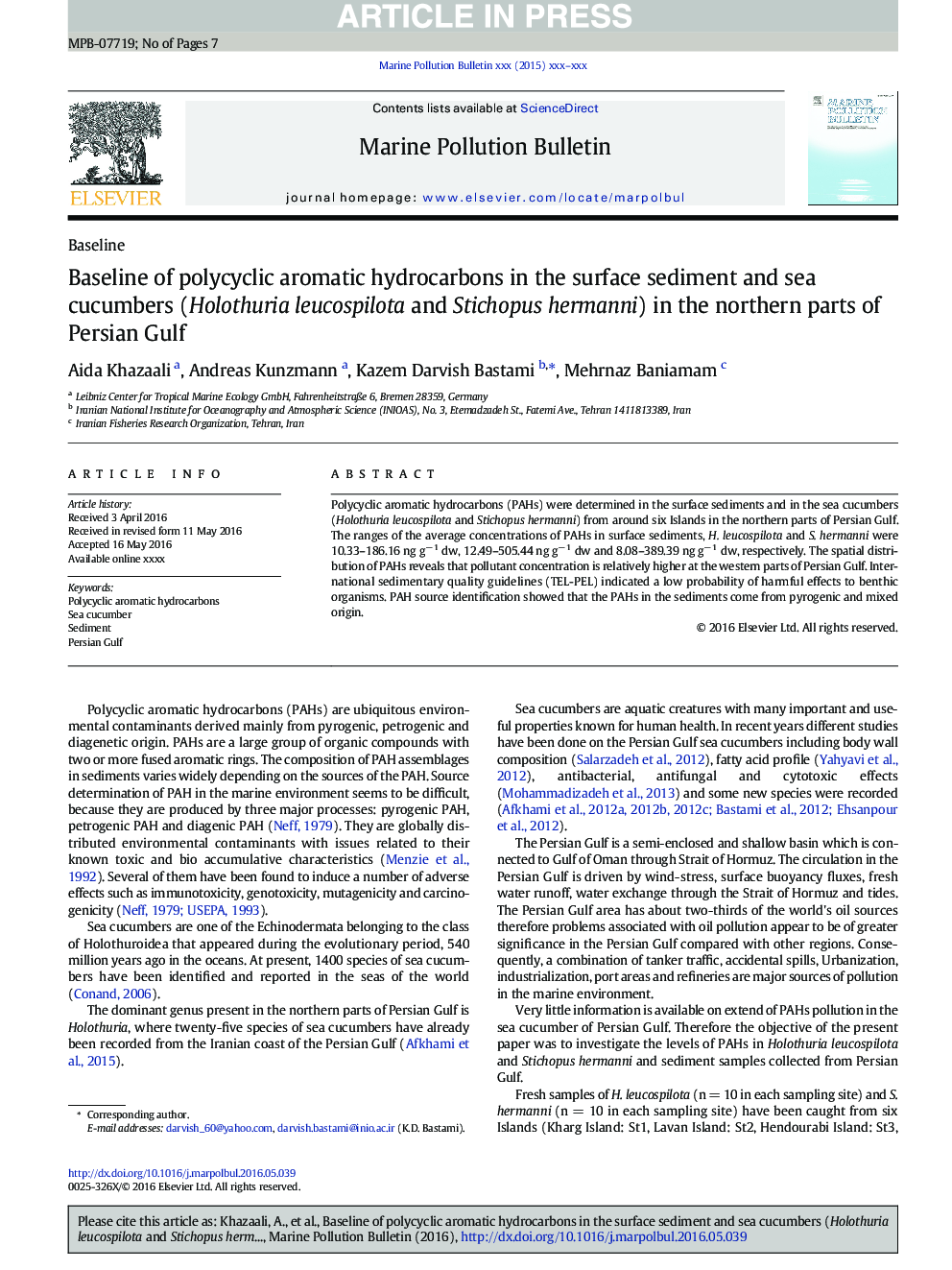| Article ID | Journal | Published Year | Pages | File Type |
|---|---|---|---|---|
| 6355750 | Marine Pollution Bulletin | 2016 | 7 Pages |
Abstract
Polycyclic aromatic hydrocarbons (PAHs) were determined in the surface sediments and in the sea cucumbers (Holothuria leucospilota and Stichopus hermanni) from around six Islands in the northern parts of Persian Gulf. The ranges of the average concentrations of PAHs in surface sediments, H. leucospilota and S. hermanni were 10.33-186.16 ng gâ 1 dw, 12.49-505.44 ng gâ 1 dw and 8.08-389.39 ng gâ 1 dw, respectively. The spatial distribution of PAHs reveals that pollutant concentration is relatively higher at the western parts of Persian Gulf. International sedimentary quality guidelines (TEL-PEL) indicated a low probability of harmful effects to benthic organisms. PAH source identification showed that the PAHs in the sediments come from pyrogenic and mixed origin.
Related Topics
Physical Sciences and Engineering
Earth and Planetary Sciences
Oceanography
Authors
Aida Khazaali, Andreas Kunzmann, Kazem Darvish Bastami, Mehrnaz Baniamam,
